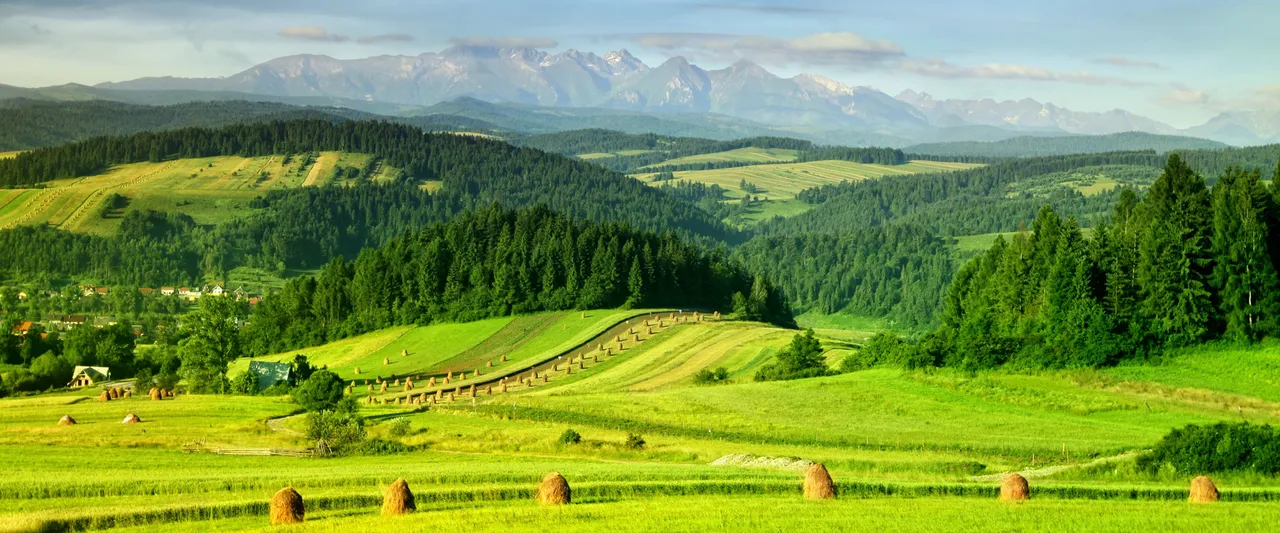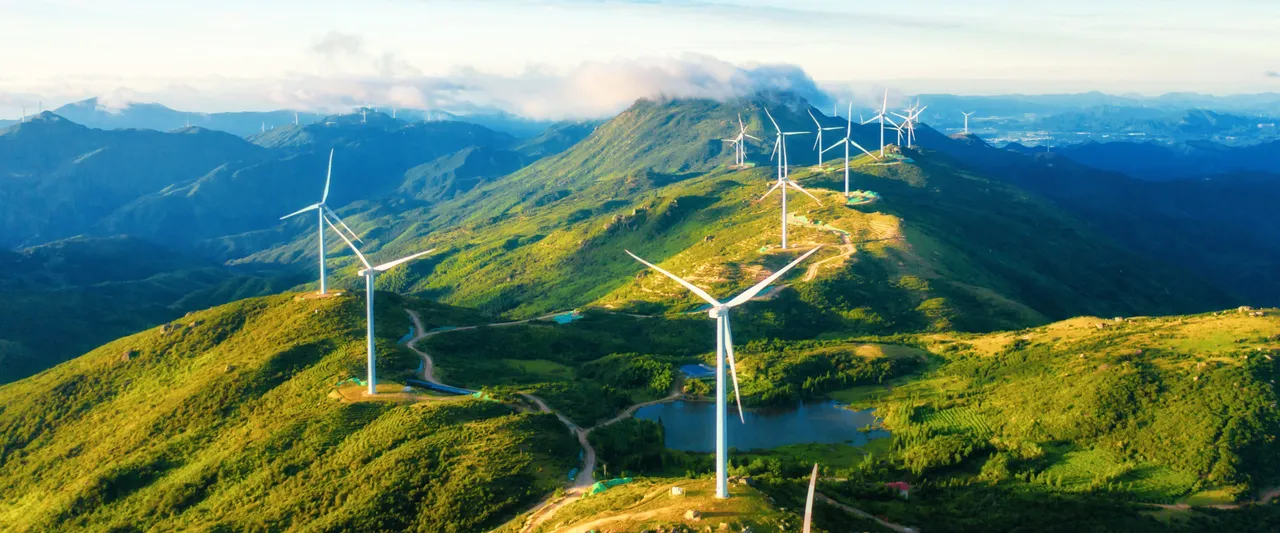AI in agriculture: use cases, benefits & barriers to adoption
Agriculture businesses are facing mounting pressure to meet the growing demand for food while adapting to climate change, rising input costs, and stricter environmental regulations. Artificial intelligence is the technology showing the most potential for helping farmers overcome these problems and stay competitive. Recent statistics reflect increasing interest in AI for streamlining farming operations, with the global market for AI in agriculture expected to grow at a CAGR of 26.3%, reaching $46.6 billion in 10 years.
Able to quickly process large volumes of agricultural data, AI models can provide agricultural enterprises with real-time insights and accurate predictions essential for optimized planting, livestock, and irrigation management. In addition to this, AI systems can automate routine management tasks such as spraying, weeding, and equipment monitoring, helping farms operate more efficiently.
To ensure the effective implementation and utilization of AI, farm owners often opt for AI consulting to get AI solutions tailored to their needs. If you’re interested in learning how agricultural producers apply AI today, as well as exploring AI benefits and risks, keep reading.
Benefits of AI in agriculture
Farm owners can apply artificial intelligence to processes throughout the whole agricultural production cycle, from planting and irrigation to animal health management and resource planning, and get various benefits from implementing this technology.
Cost savings & risk reduction
Using AI, agricultural businesses can reduce costs by minimizing resource waste, streamlining task completion, and identifying equipment underutilization, malfunctioning, or inefficiencies. AI technology also helps farmers detect risks related to weather or livestock and crop health early, enabling timely adjustments to resource use or treatment plans.
Increased agricultural output
Trained on historical agronomic datasets, environmental records, and crop yield and livestock performance information, machine learning algorithms enable evidence-based optimization of operational planning, including planting schedules, breeding cycles, and harvest timing. This way, AI enables farmers to increase output per hectare and per animal without expanding their farmland or herds and even in regions facing climate variability or resource constraints.
Labor efficiency
AI enhances farm labor productivity by automating routine agricultural management tasks. For example, AI tools can autonomously manage irrigation systems, livestock feeding controls, and greenhouse ventilation fans, reducing the need for constant human supervision. This way, AI automation allows farmers to focus on tasks that require human judgment or direct intervention.
Enhanced sustainability
AI tools can help agribusinesses enable precision agriculture to lower the usage of pesticides and herbicides to the necessary amounts, eliminate water waste, and enhance soil health, reducing the environmental impact of their activities, such as soil and water contamination. Additionally, AI supports ongoing monitoring of critical metrics like soil condition, carbon levels, and herd health, helps make informed decisions about resource usage, and enables efficient task scheduling, promoting more responsible land and livestock management.
Ready to turn your farm data into actionable insights with a tailored AI solution?
Core applications of AI in agriculture
AI solutions have a wide range of applications in agriculture that cover crop production, livestock management, and operational workflows.
Crop & soil management
Farmers and growers can use AI and computer vision to monitor soil and crops in real time and efficiently manage them, adjusting agricultural inputs and field activities based on soil moisture and nutrient levels, plant stress, and other agronomic factors.
- Monitoring soil moisture, texture, pH, and nutrient levels using sensor networks and satellite imaging
- Classifying soil types and matching them with suitable crop varieties to support future planting activities
- Mapping field variability and detecting nutrients deficiencies or compaction zones
- Tracking vegetative growth stages and assessing crop vigor
- Identifying early signs of stress in plants due to soil imbalance, salinity, or compaction
Irrigation & fertilization management
Farm businesses can apply AI tools to analyze environmental conditions, soil data, and crop-specific requirements and use water and nutrients more precisely. Farmers can also implement AIoT technologies to continuously monitor fields and crops and trigger irrigation or fertilizer application automatically when needed.
- Creating irrigation schedules based on evapotranspiration rates, root zone data, and weather forecasts
- Detecting leaks or inefficiencies in the irrigation infrastructure
- Predicting irrigation requirements for each crop stage based on yield goals, soil texture, and rainfall likelihood
- Optimizing irrigation strategies across fields to reduce water waste and improve yields
Livestock & animal health monitoring
AI systems assist farmers with the early detection of behavioral, physical, and physiological changes in livestock, signs of illness, reproductive status, or nutritional deficiencies, helping prevent animal diseases, reduce losses, and improve herd productivity.
- Tracking movement patterns and gait anomalies using video analytics to identify health problems early
- Monitoring eating, drinking, and rumination habits via smart sensors to detect metabolic or digestive disorders
- Identifying animals in estrous cycles or labor to time interventions more accurately
- Estimating weight gain through camera-based body scoring
- Assessing milk yield patterns via production logs
- Smart control of environmental conditions in barns
Pest & disease control
Farmers can detect pests and diseases earlier and more accurately thanks to the AI-driven analysis of visual cues from plant appearance, meteorological information, and other environmental signals.
- Identifying pest species using field images
- Detecting leaf discoloration, lesions, or mold to flag likely infections
- Mapping disease spread across fields
- Getting recommendations on treatment windows and intervention zones based on infestation stages and weather conditions
- Predicting the risk of infestation and disease outbreaks using multi-year pest cycle patterns and local environmental conditions
AI-enabled automation of field operations
Farm workers can use AI-powered tractors, drones, and robotic equipment that autonomously perform tasks such as spraying, weeding, and harvesting with minimal human supervision.
- Automating weeding by using AI to distinguish crops from invasive species in real time
- Using autonomous harvesters that leverage AI to selectively pick ripe products based on size, color, or firmness
- Operating tractors and machinery with built-in GPS navigation systems and AI-driven obstacle detection capabilities
- Using AI-enabled systems that automatically log equipment performance and adjust their operational settings
Data analytics & decision support
AI tools process agricultural data to generate practical insights that help farmers plan, monitor, and adjust crop and livestock management activities at the field, farm, or multi-site level.
- Forecasting yields by analyzing aerial imagery that shows plant health and growth, weather patterns, and historical crops and livestock productivity data
- Generating recommendations on planting, breeding, or rotation strategies based on soil health, disease records, and market trends
- Evaluating input ROI by comparing actual and predicted outcomes for specific field sections or animal groups
- Using sensor data and growth models to rank fields or livestock groups by readiness for harvest or sale
- Running what-if scenarios for planting, feeding, treatment, or harvest under varying environmental and economic conditions
Business process automation
Agriculture businesses can employ AI to handle various administrative tasks, such as supply chain management, customer segmentation, and staff planning, running large-scale agricultural operations more efficiently.
- Automating procurement processes, such as inventory monitoring and supply scheduling
- Forecasting commodity demand and pricing to support pre-season planning and contract negotiations
- Segmenting clients and tailoring product or service offers based on past interactions, preferences, and orders
- Managing maintenance schedules for on-field machinery and post-harvest processing equipment based on usage and failure predictions
- Streamlining compliance reporting by pulling data from field sensors and automatically generating compliance reports
- Using AI tools for recruitment to screen applications, match candidates to relevant roles, and schedule interviews based on farm-specific requirements
Top AI software solutions used in the agriculture sector
Artificial intelligence is being actively implemented across the agriculture industry to solve specific operational challenges. The following examples illustrate how AI-powered technologies contribute to more efficient farming practices, stronger food systems, and the achievement of more sustainable farming.
Azure Data Manager for Agriculture
Azure Data Manager for Agriculture is a cloud-based platform with built-in generative AI capabilities that helps agricultural organizations collect, standardize, and manage data from multiple sources, including sensors, satellite imagery, weather services, and farm machinery. The platform uses Microsoft’s agriculture-specific data model to convert raw data into a unified format, enabling more consistent data storage, streamlined data transformation, and seamless data retrieval.
Using the platform, businesses can also develop Copilots, conversational AI assistants that communicate with farmers in natural language, providing insights on optimal planting times, pest risks, or irrigation requirements.
OneSoil

Agricultural OneSoil Map with AI-detected fields and crops
OneSoil is a precision agriculture platform that leverages AI models and multispectral satellite imagery to help farmers remotely monitor crops and identify problem areas. The platform includes a web app and a mobile scouting app that allow users to track plant development, analyze weather and vegetation data, and document field observations.
In addition to real-time crop monitoring, the tool helps users plan the application of variable-rate fertilizers and seeds, conduct soil sampling, and analyze yield. OneSoil Map, a complementary OneSoil solution, provides agricultural information on fields and crops from across 59 countries, allowing customers to visualize food production trends and identify sustainability opportunities.
Rachio
Rachio is a technology vendor that provides hardware and software solutions for automating and optimizing watering schedules based on real-time weather, soil, and plant data. Its products are powered Hydro Intelligence™ solution that generates personalized watering plans by analyzing vegetation type, soil conditions, land size, and local climate. With features such as Rain Skip, Freeze Skip, and Seasonal Shift, the system continuously adjusts irrigation timing to avoid watering during rain, low temperatures, or high winds.
CattleEye
CattleEye is an AI-powered livestock monitoring system that combines input from an overhead camera with cloud-based video analytics software to detect early signs of lameness in dairy cows. The camera is installed above the exit lane of the milking parlor and records each cow’s movement.
The footage is then processed using deep learning models to identify abnormal gait patterns and generate individual mobility scores. This data helps farmers intervene early, reduce health-related losses, and improve long-term herd sustainability.
AI in agriculture: challenges & solutions
Despite the popularization of artificial intelligence in agriculture, many farms still face practical barriers that hinder AI adoption. Here are the most widespread challenges that farmers should address to build an efficient AI-powered agrifood ecosystem.
Reluctance to adopt unfamiliar technologies
Many agricultural workers view AI tools as overly disruptive to their established workflows and often assume that smart farming devices and AI-enabled software will complicate and slow down daily processes.
Solution:
Start by organizing training sessions aligned with your AI use cases and your team’s specialty and technical proficiency levels. These sessions should demonstrate how your selected AI tools can improve familiar workflows at a farm, as well as include hands-on practice to help farm workers get acquainted with the AI solutions. To ease the transition to AI-assisted agriculture and reduce pushback from your team, request on-site workshops from your AI solution providers and enlist their ongoing technical support.
Financial barriers
AI tools have high upfront implementation costs, so many farmers, especially small businesses and startups, are unable to adopt them despite the fact that they could benefit from them tremendously.
Solution:
Explore public–private partnerships and national initiatives that provide financial support to farmers adopting AI to reduce the initial costs. To further optimize your expenses, choose providers of AI models and tools that offer tiered pricing or platforms with a modular architecture, so you can put to use only specific capabilities, such as yield forecasting or feed optimization, without committing to a full-scale solution at once. Roll out these solutions step by step, focusing on one or two areas to match your budget and operational capacity. Finally, if individual investment is not feasible, consider joining or forming a cooperative to share the cost of AI platforms and benefit from collective access to advanced decision-making tools.
Technological limitations
Adopting AI in modern agriculture often requires digital infrastructure that many farms lack. Poor internet connectivity, absence of sensor networks, and limited hardware integration hinder the use of AI models in both field and animal operations.
Solution:
Start with AI-enabled tools that work over SMS or offline mobile apps to begin using AI without relying on constant internet access. To expand your AI capabilities’ access to remote or underserved areas, consider partnering with local authorities or industry networks to co-fund infrastructure, such as edge computing devices and satellite links, that can process and transmit AI data in remote areas. Finally, to make sure that AI solutions integrate with legacy systems and machinery, prioritize those that provide native connectors, retrofit kits, or APIs for integration with farm management software or other business applications used in your organization, so you don’t need to replace existing equipment or software tools.
Data privacy & ethical concerns
Agricultural AI solutions collect large volumes of data from equipment, sensors, satellite imagery, and farm records, which raises concerns about data ownership, fair data use, and data security.
Solution:
Develop clear data guidelines for your farm to ensure responsible AI use by your workers. In particular, establish who owns the data generated on your farm and how it’s anonymized and utilized. Additionally, choose AI software providers that offer transparent opt-in policies for enabling data collection and provide comprehensive documentation on how your data is collected, stored, and used to train AI systems.
Lengthy adoption timelines
In the agricultural industry, business owners have to factor in complex biological cycles, seasonal workflows, and interdependent systems, including irrigation, fertilization, and livestock care solutions, when rolling out AI solutions. This is why farm owners often delay AI projects due to concerns that such a transformation will be slow and disruptive or that the technology won’t be compatible with existing agricultural practices.
Solution:
Work with IT agencies that specialize in agriculture and can integrate AI-powered software and hardware systems without downtime, data loss, and disruption to your current workflows. Furthermore, select AI solutions that come pre-configured for faster and easier implementation within your technical ecosystem, so you can avoid delays associated with lengthy configurations.
Closing thoughts
Artificial intelligence is becoming a valuable tool for addressing some of the most pressing challenges in agriculture. Being part of broader advancements in digital agriculture, AI enables more targeted irrigation, optimized resource allocation, and early detection of health issues in crops and livestock, helping producers get better yields and contributing to long-term food security and business profitability.
As more agricultural businesses invest in digitalizing their operations, early adopters of AI will be better positioned to realize the long-term benefits of the technology. If you’re planning to implement AI on your farm, our team at Iflexion can help you develop and integrate AI and machine learning solutions aligned with your farm’s specific needs.
Streamline livestock and crop management with AI













